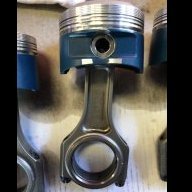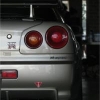HKS Vcam Step Pro Issues
Announcements
-
Similar Content
-
Latest Posts
-
On the compressor side it looks like the best, if your head setup will support doing 100-110lb/min at 30psi-ish boost. The G45-1350 compressor looks ideally better if you need closer to 40psi for it, given both the G40 1150 and G42 1200 look like they'll be around the 100lb/min mark at 35psi and dropping from there. Bear in mind the turbine sides are all different between those three turbos, so that COULD be an influencing factor for how they all perform in the real world as well. Not sure if you've made a conscious decision to only look at Garrett or not, but at least on paper the XRE7169S matches or beats those other three at everything from 30psi up and just going from wheel size alone likely to be at least as responsive as the G40 1150 and seem to behave closer to G42s in terms of turbine flow.
-
@Lithium looking for a turbo for my Rb30. Want to make sure I understand this correctly. If I want to stay 40psi or under my best choice of these 3 is actually the smaller G40-1150 ?
-
Massive ups for MTHire also. Could not have done the subframe bushings job without hiring the tool from them. Process was super easy and cost me around 25% of the cost of the tool. If you need a tool to do a one-time job, check them out. (Paid for the rental myself, no sponsorship here.)
-
I'd suggest calling Unigroup, they have a lot of experience with these, access to reliable fabricators etc. Of course it will cost but at least you can trust what they tell you







Recommended Posts
Create an account or sign in to comment
You need to be a member in order to leave a comment
Create an account
Sign up for a new account in our community. It's easy!
Register a new accountSign in
Already have an account? Sign in here.
Sign In Now